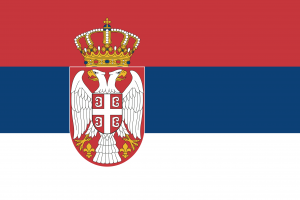Language/Serbian/Grammar/Plurals
Hi Serbian learners! 😊
In this lesson, we will cover the plural forms of nouns in the Serbian language. Understanding plurals is crucial for communicating effectively in Serbian, so let's get started!
Once you've mastered this lesson, take a look at these related pages: Comaratives and Superlatives, Serbian language has 3 genders, Give your Opinion & 0 to A1 Course.
What are plurals?[edit | edit source]
Plurals are noun forms that represent more than one person, animal, object, or concept. In Serbian, words can be pluralized based on their gender and number.
Gender[edit | edit source]
The Serbian language has three genders: masculine, feminine, and neuter. The gender of a noun determines which form of an adjective, pronoun, or verb is used to modify or agree with it. In Serbian, the gender of a noun is usually recognizable from the word ending, but there are some exceptions.
Let's take a look at some examples:
Masculine nouns[edit | edit source]
Masculine nouns in Serbian usually end in -a, -ar, -anin, etc. The plural ending for most of them is -i.
| Serbian | Pronunciation | English |
|---|---|---|
| pas | /pâs/ | dog |
| pasovi | /pâsɔʋi/ | dogs |
| direktor | /dirèktor/ | director |
| direktori | /dirèktɔri/ | directors |
| student | /stûdent/ | student |
| studenti | /stûdenti/ | students |
Feminine nouns[edit | edit source]
Feminine nouns in Serbian usually end in -a or -ija. The plural ending for most of them is -e.
| Serbian | Pronunciation | English |
|---|---|---|
| sestra | /sèstra/ | sister |
| sestre | /sèstre/ | sisters |
| soba | /sɔ̀ba/ | room |
| sobe | /sɔ̀be/ | rooms |
| knjiga | /kɲîga/ | book |
| knjige | /kɲîge/ | books |
Neuter nouns[edit | edit source]
Neuter nouns in Serbian usually end in -o or -e. The plural ending for most of them is -a.
| Serbian | Pronunciation | English |
|---|---|---|
| dete | /dète/ | child |
| deca | /dètsa/ | children |
| drvo | /drvò/ | tree |
| drva | /drvɔ/ | trees |
| žvakaća | /ʒvakâtʃa/ | chewing gum |
| žvakaće | /ʒvakâtʃe/ | chewing gums |
Number[edit | edit source]
In Serbian, there are two types of numbers: singular (one person, animal, object, or concept) and plural (more than one person, animal, object, or concept). The plural form is used for two or more items.
Let's take a look at some examples:
Singular[edit | edit source]
- Dobar dan. (Good day.)
- Jeste li čitalo knjigu? (Have you read the book?)
Plural[edit | edit source]
- Dobre knjige. (Good books.)
- Jeste li čitali knjige? (Have you read the books?)
Exceptions[edit | edit source]
Like in any other language, there are some exceptions to the rules. Some nouns have irregular plural forms that should be learned through practice and experience. For example:
| Serbian | Pronunciation | English |
|---|---|---|
| čovek | /tʃɔ̀vɛk/ | man |
| ljudi | /ʎûdi/ | people |
| ruka | /rùka/ | hand |
| ruke | /ruːke/ | hands |
| oko | /òkɔ/ | eye |
| oči | /òtʃi/ | eyes |
Practice Dialogue[edit | edit source]
Here is a dialogue using plural forms of nouns:
- Person 1: Kolike sestri imate? (How many sisters do you have?)
- Person 2: Imam dve sestre. (I have two sisters.)
- Person 1: Gde idete?
(Where are you going?) - Person 2: Idemo u prodavnice. (We're going to the stores.)
Conclusion[edit | edit source]
In conclusion, understanding plural forms is crucial for communicating effectively in Serbian. Remember, masculine nouns end in -i, feminine nouns end in -e, and neuter nouns end in -a. There are some exceptions, so practice is essential. Keep practicing and using Serbian plural forms in context to improve your language skills.
If you have any questions, please ask them in the comments section below.
Feel free to edit this wiki page if you think it can be improved. 😎
Sources[edit | edit source]
Other Lessons[edit | edit source]
- Imperative Tense
- Give your Opinion
- Indefinite Articles in Serbian
- Definite Articles in Serbian
- Prepositions
- Past Participle in Serbian
- Pronouns
- Be Polite
- Comaratives and Superlatives
- Conditional Tense

